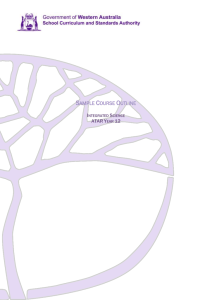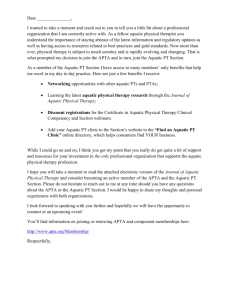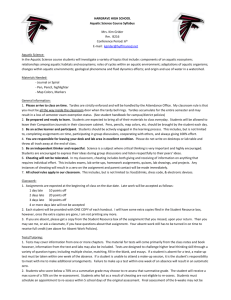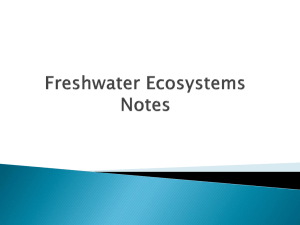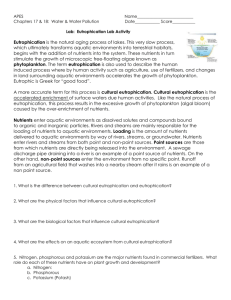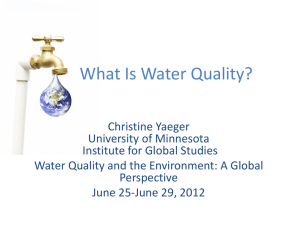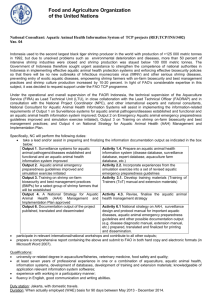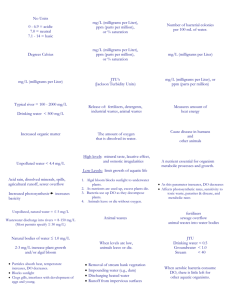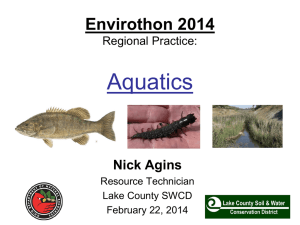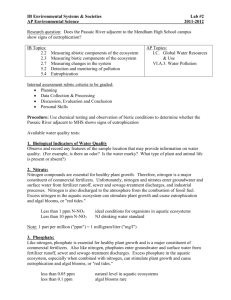28 Humans Alter BCG Cycles
advertisement
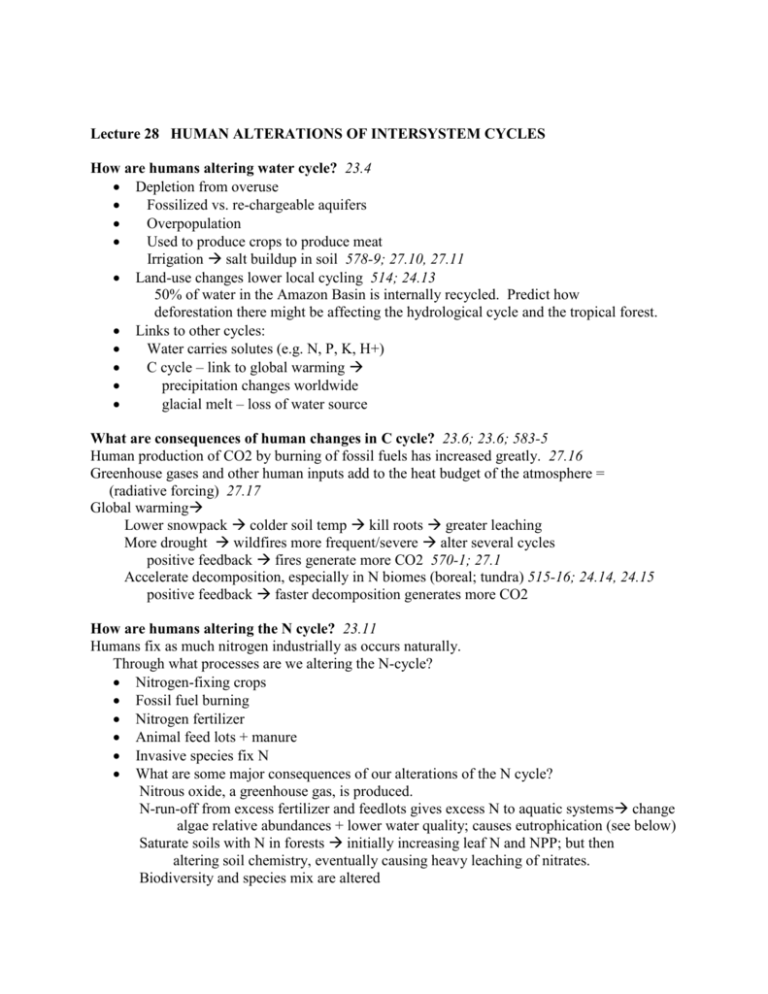
Lecture 28 HUMAN ALTERATIONS OF INTERSYSTEM CYCLES How are humans altering water cycle? 23.4 Depletion from overuse Fossilized vs. re-chargeable aquifers Overpopulation Used to produce crops to produce meat Irrigation salt buildup in soil 578-9; 27.10, 27.11 Land-use changes lower local cycling 514; 24.13 50% of water in the Amazon Basin is internally recycled. Predict how deforestation there might be affecting the hydrological cycle and the tropical forest. Links to other cycles: Water carries solutes (e.g. N, P, K, H+) C cycle – link to global warming precipitation changes worldwide glacial melt – loss of water source What are consequences of human changes in C cycle? 23.6; 23.6; 583-5 Human production of CO2 by burning of fossil fuels has increased greatly. 27.16 Greenhouse gases and other human inputs add to the heat budget of the atmosphere = (radiative forcing) 27.17 Global warming Lower snowpack colder soil temp kill roots greater leaching More drought wildfires more frequent/severe alter several cycles positive feedback fires generate more CO2 570-1; 27.1 Accelerate decomposition, especially in N biomes (boreal; tundra) 515-16; 24.14, 24.15 positive feedback faster decomposition generates more CO2 How are humans altering the N cycle? 23.11 Humans fix as much nitrogen industrially as occurs naturally. Through what processes are we altering the N-cycle? Nitrogen-fixing crops Fossil fuel burning Nitrogen fertilizer Animal feed lots + manure Invasive species fix N What are some major consequences of our alterations of the N cycle? Nitrous oxide, a greenhouse gas, is produced. N-run-off from excess fertilizer and feedlots gives excess N to aquatic systems change algae relative abundances + lower water quality; causes eutrophication (see below) Saturate soils with N in forests initially increasing leaf N and NPP; but then altering soil chemistry, eventually causing heavy leaching of nitrates. Biodiversity and species mix are altered What is the major way in which humans are altering the P cycle? 23.14 Mining for P to add to fertilizer for crops --> run-off into aquatic communities --> 24.20 increases algal abundance--> eutrophication (see below); lower water quality. Moves P to geologic time scale if sedimentation occurs How do human activities affect input from land to water? runoff/seepage agriculture land, especially NPK animal feedlots, especially N sewage input, C, N into ground water/aquifers/streams/oceans Human eutrophication (overproduction of organic matter in aquatic systems) is harmful. Added nutrients stimulate algal GPP, BUT Too much overwhelms intrasystem regeneration Increase in dead organic matter Energy flows to bacteria, not higher trophic level Increase in decomposition + respiration depletes oxygen (hypoxia + anoxia) kills aerobes, including fish lower quality of drinking water change freshwater aquatic communities create ‘dead zones’ in oceans 522; 24.23 What are consequences of human activities on sulfur cycle? 23.17 Burning of fossil fuels containing H2S puts SO4 into air SO4 reacts with H20 to form sulfuric acid acid rain 505-6; 579-80; 24.1 Of what consequence is S presence in coal? Strip-mine - sulfuric acid directly into streams--> lowers pH and disrupts aquatic community 23.18 Acid rain Lowers Ca in soils-->lowers forest productivity. Lowers pH in lakes disrupts aquatic community. Ozone (O3) + UV radiation 582-3; 27.15 1. at surface O2 with NO2 with light O3 NO2 from burning gas in cars Ozone = oxidant of organic molecules SOYFACE: elevated O3 lowers crop productivity 2. CFCs destroy ozone in upper atmosphere and creates ‘black hole’ increase damage from UV radiation
